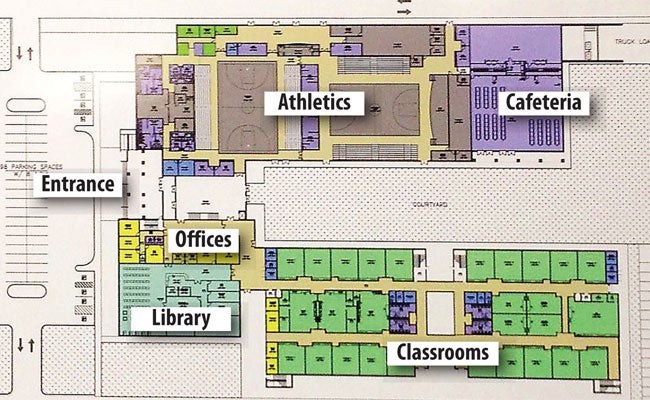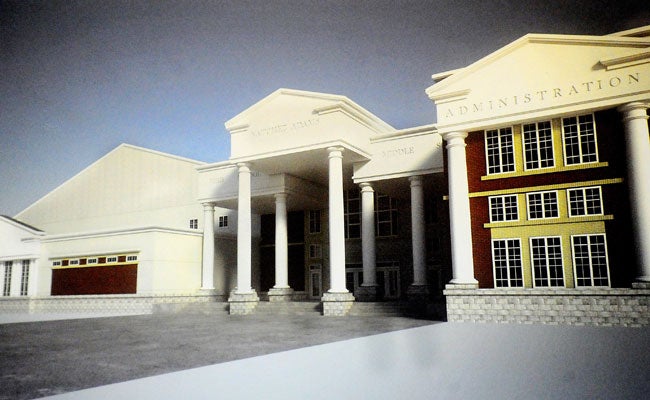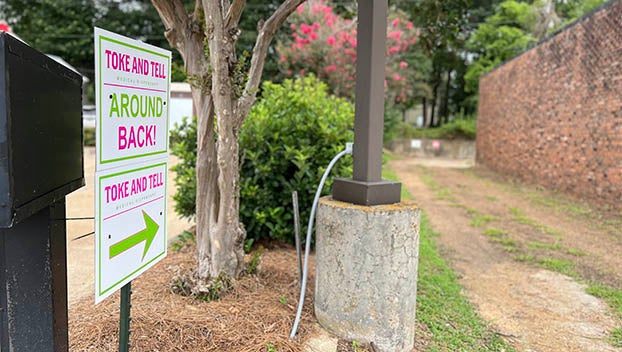NASD unveils plans for construction of new schools
Published 12:44 am Tuesday, November 29, 2016
NATCHEZ — Natchez-Adams School Board members emphasized the process of renovating current campuses or building a new school is still early, the board received preliminary cost figures Monday from its architect.
Building a new two-story school complex for up to 1,300 students is projected to cost the district $22 million — $20 million less than what construction management consultant firm Volkert Inc. had originally projected.
Superintendent Fred Butcher said when he heard the projections from Volkert, he believed the district could get the costs down when it came to actually putting a plan on paper. Butcher said it is early in the process and he intends to attempt to lower project costs further.
The firm also presented renovation options for the three elementary schools, Morgantown Middle School and Natchez High School Monday.
The proposed location for the new school is the site adjacent to Natchez High School, known as the bean field. The location poses a conflict with the Natchez-Adams County Recreation Commission which plans to build a community recreation facility there. The new construction of a high school option was floated with the idea of also housing some middle school classes.
Butcher said if the new high school could be built and the old high school renovated, one option he would potentially like to see would be to house the entire middle school and high school operations — with the exception of Natchez Early College Academy — between the two buildings.
Butcher said it would save on costs, including bussing, and also allow the schools to more easily share staff in difficult to acquire positions such as math and science.
The new building is currently designed to be built in the shape of a U, with academics in one wing, administration and the library in the middle and the other wing containing activities such as a grade A gymnasium for the basketball program seating 1,500, auditorium and cafeteria.
The front façade would include red bricks and columns in what M3A architectural firm principal William McElroy said was designed to look similar to a Mississippi college campus structure.
“In a highly visible location, we have to consider what it expresses to the community,” McElroy said. “This will express in every sense college prep, in terms of what it looks like and in terms of what it does.”
The library would have an exterior of glass enabling it to make a good first impression on visitors, McElroy said.
“I always envision that one of the first things you will see when looking at a school is the library,” he said. “It is symbolic of the mission to educate children.”
M3A did not present line item options for costs in constructing a new school, but did in the renovation options.
For renovating Morgantown Middle School, the goal would be to replace the roof, rework the electrical, renovate the restrooms and work to correct security issues including replacing the exterior windows.
The cost for renovations at Morgantown without replacing the heating, ventilation and air-conditioning system would be $1.1 million, and approximately $2 million with replacing the HVAC.
McLaurin, Frazier and West elementary schools all had similar security challenges in creating a secure entrance, with West and McLaurin coming in as the cheaper options to renovate.
At McLaurin, M3A proposed renovating the entrance so that when visitors walk in, they go into a lobby housing the administration office.
Work was also proposed to be done on an existing two-story classroom space behind the school, which could enable the mobile classrooms to be removed and a parking lot being created where the mobile units are currently located.
The cost would be just under $1 million without a new HVAC system, which would bring the cost up to $1.93 million.
At West, the primary problem is physical education is happening in a mobile classroom space, McElroy said. M3A proposed building a $1.4 million gym that would include a stage, offices, a computer lab and a nursing area.
Renovations would include putting up a fencing façade to close the campus and renovating an entrance for visitors.
Cost for renovations and constructing a new gym would be approximately $2.26 million. With adding a new HVAC system, the cost would be approximately $2.9 million.
Frazier is the most expensive elementary upgrade at approximately $9.15 million. Upgrading the campus’s electrical and IT system could also add another $200,000.
Challenges at Frazier include security upgrades, the need to build new classroom space and a new roof would have to be installed.
The Natchez High School renovation option is projected to cost approximately $17.13 million.
Some buildings on campus would be demolished as McElroy said it is cheaper to build a new learning house with labs than renovate the buildings and attempt to include the structures within an enclosed campus.
Renovations — which include completely replacing the roof — and security enhancements — including a façade wall around the exterior of the building — are projected to be the bulk of the costs at $6.5 million.
The new learning house plus creating an administration building near the front of the school and a new band hall near the rear of the school project to cost $5.91 million.
Removing some buildings would allow for a large green space between the cafeteria and the auditorium, where students could potential eat during nice weather and the band could practice, McElroy said.
School Board member Phillip West said the district has come a long way in a short time on potentially building a new school or renovating its campuses. West proposed the administration look at the options and come up with a plan of two to three for the board to consider.
Butcher said he intended for the board to meet to discuss potential options before school lets out for the holidays on Dec. 16.
“I want to keep the momentum because we are so far behind on our facilities and it is going to take a lot of work regardless of whatever the consensus is,” West said. “We will have to educate the community on the need.”







